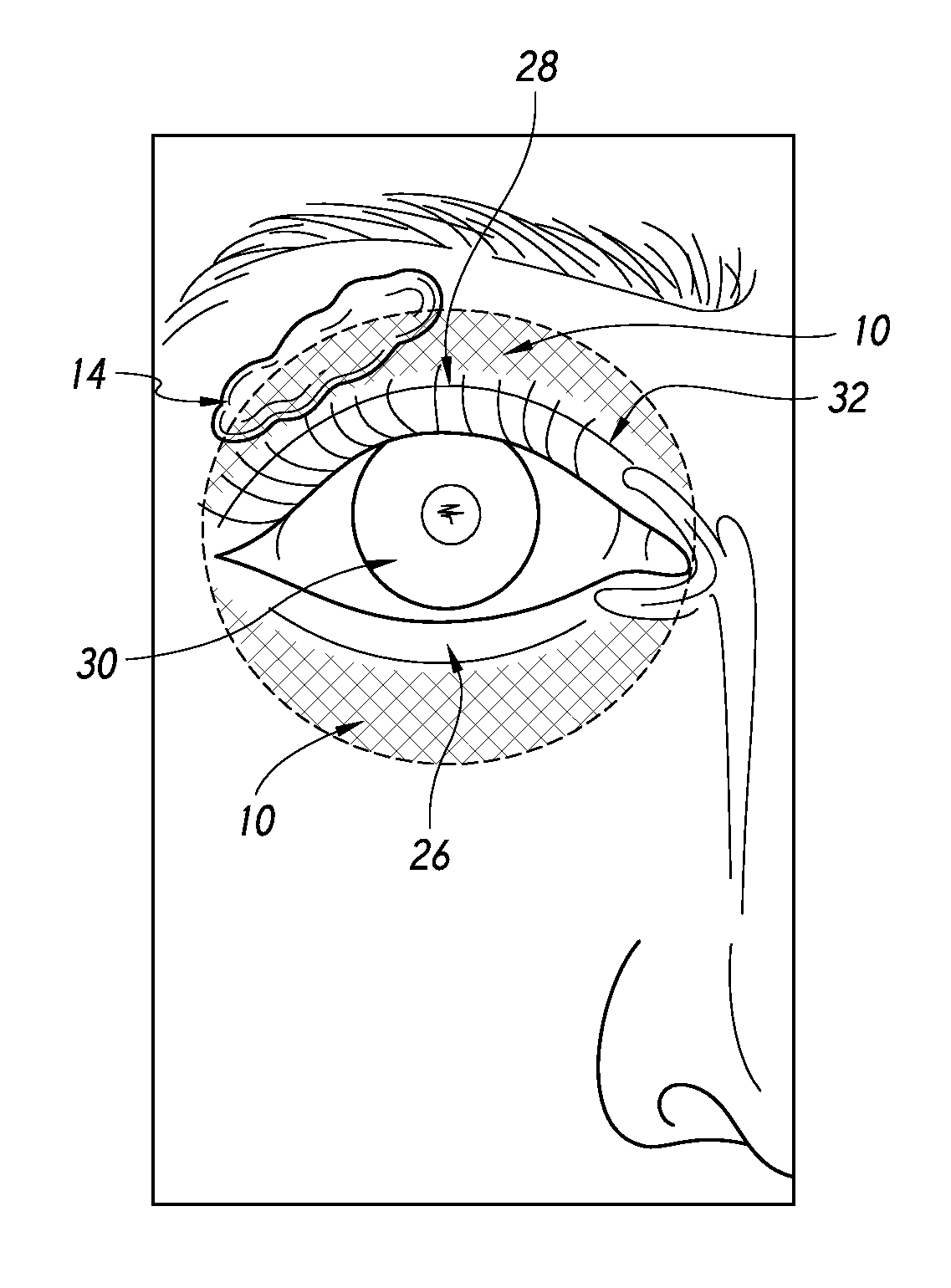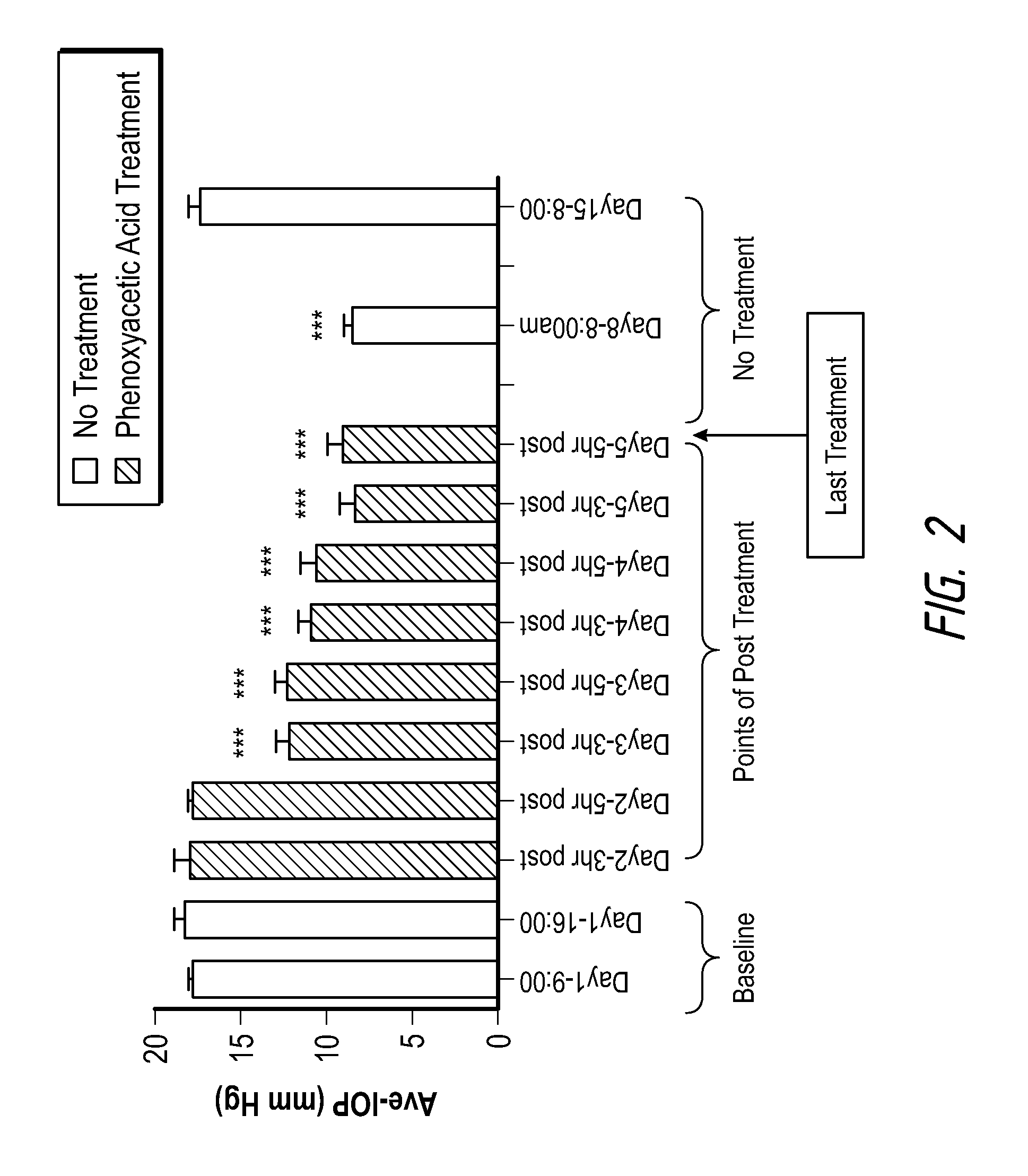Quantitative peri-orbital application of ophthalmology drugs
a technology of ophthalmology and periorbital application, which is applied in the direction of drug compositions, pharmaceutical delivery mechanisms, medical preparations, etc., can solve the problems of inconvenient and inefficient self-administration of eye drops to the eye, temporary blurred vision, and unwanted ocular side effects
- Summary
- Abstract
- Description
- Claims
- Application Information
AI Technical Summary
Benefits of technology
Problems solved by technology
Method used
Image
Examples
example i
[0152]The experimental protocol was as follows:
Day 1; 8 Cynomolgus monkeys, which are the favored animal model for glaucoma studies, were assigned to the study. Intraocular pressure was measured in both eyes. The 6 animals with the highest intraocular pressure were selected for study.
Animal Information
[0153]
NO.Animal IDSpiceSexAge (years)B.W. (Kg)1052267CynomolgusFemale105.62082272CynomolgusFemale73.43082150CynomolgusFemale76.64072270CynomolgusFemale84.75072271CynomolgusFemale84.56052268CynomolgusFemale103.8
[0154]All Cynomolgus monkey experiments adhered to the ARVO statement for the Use of Animals in Ophthalmic and Vision Research and in accordance with the recommendations of Guide for the Care and Use of Laboratory Animals.
[0155]Day 2 Intraocular pressure was measured in both eyes of the 6 selected animals. Before dosing the monkeys, the delivery of vehicle (Polyethylene glycol 400) and the compound (3-[(3′-fluoro-4-fluorobiphenyl-3-carbonyl) amino] phenoxyacetic acid isopropyl es...
example ii
[0158]A 55-year-old African American male suffers from ocular hypertension and the patient's ophthalmologist is concerned his condition could progress to glaucoma if the patient's elevated intraocular pressure is not brought down to normal levels. The patient applies a solution of 0.1% w / v 3-[(3′-fluoro-4-fluorobiphenyl-3-carbonyl)amino] phenoxyacetic acid isopropyl ester (Formula 5, Table I) to the periorbital skin around each eye by use of a roller device applicator to each eye for three days. After day 2, the patient's IOP will begin to drop to normal levels. After Day 3, the patient will then administer the drug once a week to the patient's periorbital skin around each eye. The patient's IOP will fall to normal levels and stays at normal levels as long as the patient continues to administer the solution once a week.
example iii
[0159]A 72-year-old Caucasian female suffers from open angle glaucoma with elevated IOP. After an eye exam, the patient's ophthalmologist prescribes a cream comprising 0.2% w / w of 3-[(3′-fluoro-4-fluorobiphenyl-3-carbonyl)amino] phenoxyacetic acid isopropyl ester (Composition 4, Table II). The patient will apply the cream once a week around her periorbital skin of both eyes and 24 hours after the first application the patient's IOP lowers to normal levels. The patient's IOP remains at normal levels so long as the patient continues to administer the composition weekly.
PUM
| Property | Measurement | Unit |
|---|---|---|
| Time | aaaaa | aaaaa |
| Time | aaaaa | aaaaa |
| Time | aaaaa | aaaaa |
Abstract
Description
Claims
Application Information
 Login to View More
Login to View More - R&D
- Intellectual Property
- Life Sciences
- Materials
- Tech Scout
- Unparalleled Data Quality
- Higher Quality Content
- 60% Fewer Hallucinations
Browse by: Latest US Patents, China's latest patents, Technical Efficacy Thesaurus, Application Domain, Technology Topic, Popular Technical Reports.
© 2025 PatSnap. All rights reserved.Legal|Privacy policy|Modern Slavery Act Transparency Statement|Sitemap|About US| Contact US: help@patsnap.com



